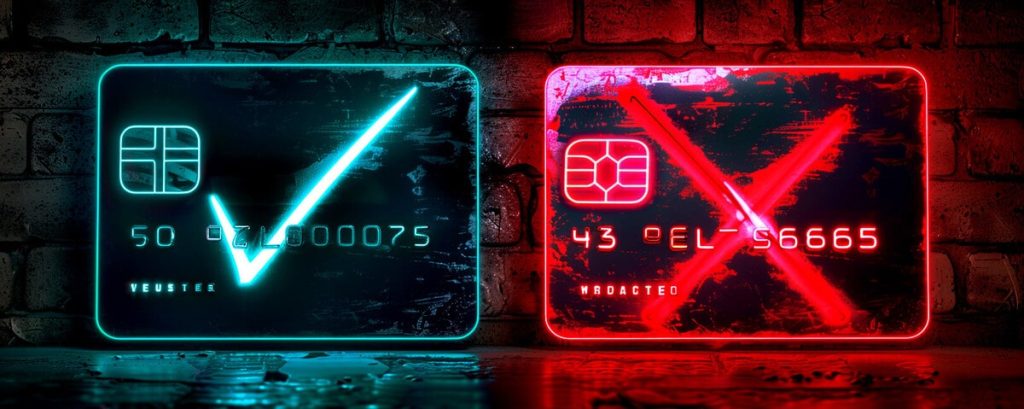Chargeback fraud is a serious challenge for modern businesses, especially e-commerce. As of 2023, businesses lost over $25 billion due to fraudulent chargebacks. In this article, we will explore how to identify, prevent, and manage chargeback fraud.
What is Chargeback Fraud?
Chargeback fraud happens when a customer disputes a legitimate charge with their card issuer, falsely claiming they didn’t make the purchase or didn’t receive the product. This results in the merchant losing both the product and the payment.
Types of Chargeback Fraud
- Accidental Friendly Fraud: Customers file a chargeback because they don’t recognize the charge on their statement.
- Deliberate Fraud: Customers knowingly file false disputes to get goods or services for free.
- Return Fraud: Customers return used items claiming they are faulty.
- Digital Goods Fraud: Customers download digital products and claim non-receipt.
Why Chargeback Fraud Happens
Chargebacks were created by VISA and MasterCard to protect consumers from fraud. However, the process often favors the consumer. When a customer disputes a charge, merchants face an uphill battle to prove the legitimacy of the transaction. Most disputes stem from unclear policies or customers taking advantage of the system.
In 2023, 80% of chargebacks were identified as friendly fraud, meaning they were initiated by legitimate customers under false pretenses (source: Checkout.com). This growing problem can be linked to the rise of e-commerce and digital transactions, where in-person verification is impossible.
Causes:
- Unclear Return/Refund Policies: Customers file chargebacks if they feel navigating the return process is difficult.
- Billing Descriptor Confusion: Many disputes arise when customers don’t recognize charges on their credit card statements.
- Growth in Online Purchases: The impersonal nature of e-commerce makes it easier for fraudulent customers to abuse the system.
The Cost of Chargeback Fraud
Chargebacks are costly. Besides losing revenue, merchants face fees ranging from $15 to $100 per chargeback. Dealing with chargebacks requires time, resources, and often legal representation, further inflating costs.
Breakdown of Chargeback Costs:
| Cost Category | Description | Average Cost |
|---|---|---|
| Lost Revenue | Sales lost due to fraudulent chargebacks | $100 |
| Chargeback Fees | Fees imposed by payment processors | $15-$100 per chargeback |
| Operational Costs | Resources spent on dispute management | $50 |
| Fraud Prevention Costs | Costs to implement fraud detection tools | $75+ |
For every $100 lost to chargebacks, merchants incur $240 in additional costs.

How to Prevent Chargeback Fraud
To effectively stop chargeback fraud, businesses must take proactive steps.
1. Improve Customer Communication
Unrecognized transactions are a major cause of chargebacks. Use clear billing descriptors that match your business name. Provide customers with transaction details, delivery updates, and confirmation emails to reduce confusion.
2. Implement Fraud Detection Tools
Modern fraud detection tools use AI and machine learning to flag high-risk transactions. Solutions like Stripe Radar and Checkout.com’s fraud detection tools can help identify fraudulent activities before they escalate into chargebacks.
3. Streamline Return and Refund Policies
Make the return process simple and transparent. Clear policies can deter customers from filing chargebacks. Include return timelines, conditions, and restocking fees prominently on your website.
4. Track and Analyze Chargebacks
Regularly review chargeback data to identify patterns. Understanding why customers dispute charges can help you adjust your business practices, such as improving product descriptions or shipping accuracy.
Partnering with Experts
For businesses experiencing frequent chargebacks, partnering with experts can be a game-changer. Merchanto.org, an official partner of VISA and MasterCard, specializes in chargeback prevention and provides tailored solutions to minimize fraud. Their services can help reduce chargeback ratios, keeping your business protected. Visit Merchanto.org to learn more.
Best Practices for Minimizing Chargebacks
Following established best practices can significantly reduce chargeback fraud.
- Use clear billing descriptors: Ensure the business name on the billing statement matches what customers recognize.
- Offer proactive customer support: Make it easy for customers to contact you with concerns before they escalate to chargebacks.
- Provide order tracking and proof of delivery: Keeping thorough records of shipments and deliveries can help you dispute chargebacks successfully.
- Train your team: Ensure your employees are aware of how to handle chargebacks and prevent disputes before they arise.
Best Practices Overview:
| Best Practice | Expected Outcome |
|---|---|
| Clear Billing Descriptors | Fewer chargebacks due to confusion |
| Accurate Product Descriptions | Reduces disputes related to “Item not as described” |
| Strong Customer Support | Solves problems before they escalate to chargebacks |
| Proof of Delivery | Helps defend against false “non-delivery” claims |
| Use of Fraud Detection Tools | Prevents high-risk transactions |

Legal and Industry Standards
Both VISA and MasterCard set guidelines for chargeback disputes. Understanding their reason codes is essential. For example, VISA Reason Code 83 addresses fraudulent transactions, while MasterCard Reason Code 4853 covers unauthorized transactions. If merchants exceed certain chargeback thresholds, they risk facing penalties or losing their ability to accept payments.
In 2022, VISA introduced new dispute rules to make the chargeback process more transparent. These changes allow merchants to contest disputes more effectively by providing clearer guidelines on required evidence (source: VISA documentation).
Chargeback Ratios and Penalties:
| Payment Network | Chargeback Ratio Threshold | Penalties |
|---|---|---|
| VISA | 1% | Higher fees, risk of losing payment privileges |
| MasterCard | 0.9% | Fines, stricter monitoring |
Technology Solutions for Preventing Chargebacks
Technology plays a vital role in preventing chargeback fraud. Fraud detection tools powered by AI and machine learning analyze transaction data to flag suspicious activities. Platforms like Stripe Radar or Braintree integrate these tools directly into payment processing systems.
Key Fraud Detection Features:
- Real-time transaction analysis: Detects fraudulent purchases before they complete.
- Risk scoring: Each transaction is assigned a risk score based on factors like IP address, transaction amount, and customer history.
- Automatic declines: High-risk transactions can be automatically blocked, preventing chargeback fraud.
Here’s a table summarizing top fraud prevention tools and their key features:
| Fraud Detection Tool | Key Features | Platform |
|---|---|---|
| Stripe Radar | Real-time fraud detection, risk scoring | Stripe |
| Checkout.com Fraud Detection | Machine learning, automated decisions | Checkout.com |
| Braintree Fraud Protection | Integration with fraud analytics | Braintree |
Managing Chargebacks
Even with the best prevention measures, chargebacks will happen. When they do, it’s critical to manage the dispute process efficiently.
Steps for Handling Chargebacks:
- Gather Evidence: Collect transaction records, shipping details, and any communication with the customer.
- Respond Quickly: You typically have 30-45 days to respond to a chargeback. Timeliness is crucial.
- Dispute Valid Chargebacks: When you have solid proof, dispute fraudulent claims. Document everything thoroughly.
- Track Chargeback Trends: Use the data to adjust your policies or operations to prevent future disputes.
By managing chargebacks effectively, businesses can reclaim a portion of lost revenue. On average, merchants win only 20-25% of disputes, so a strong evidence-gathering process is essential (source: Braintree).
Conclusion
Chargeback fraud is a growing threat, especially as online transactions increase. By using clear communication, implementing fraud detection tools, and following best practices, businesses can significantly reduce their risk. Moreover, working with a trusted partner can provide expert solutions to minimize chargebacks.
With the right approach, businesses can protect themselves from the costly effects of chargeback fraud, safeguard revenue, and maintain strong relationships with payment processors.



